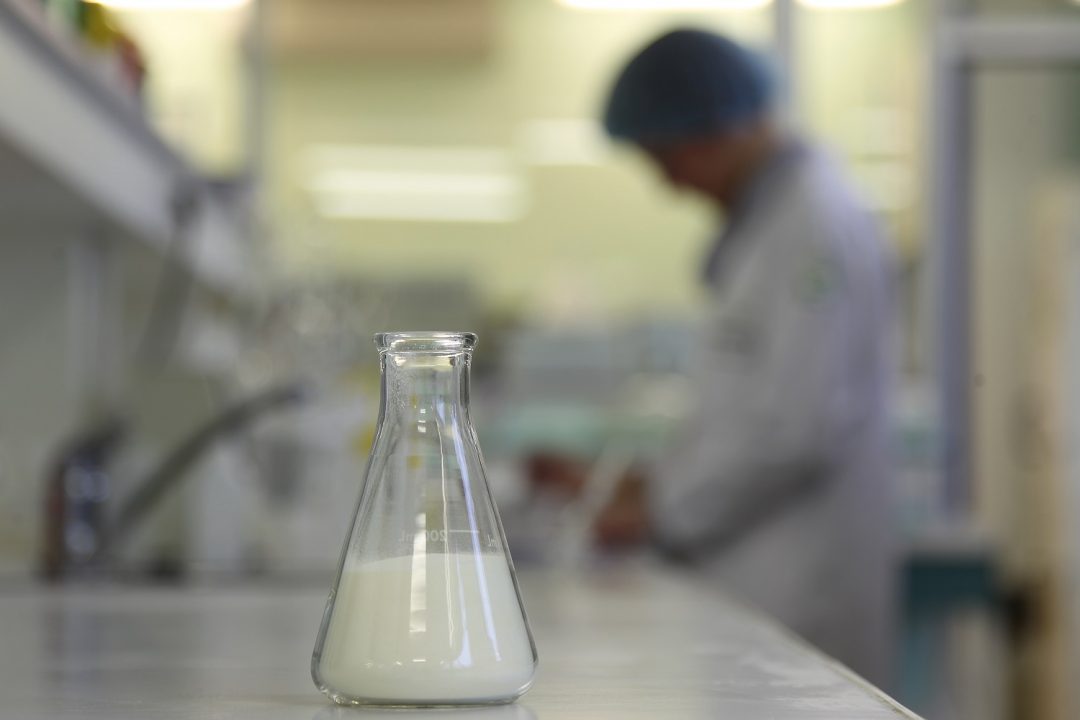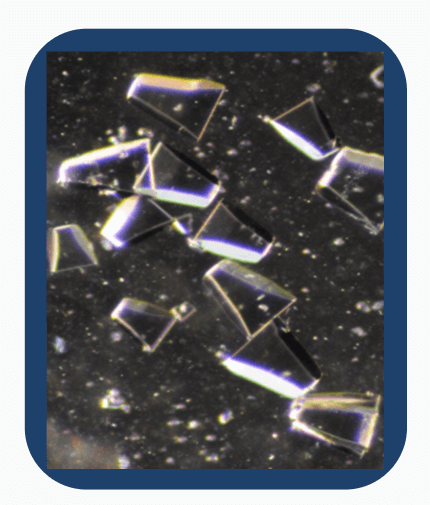
Lactose, a multifaceted disaccharide
Lactose: a disaccharide
Lactose, sometimes called milk sugar, is a disaccharide as it is made up of two simple sugars known as monosaccharides: glucose and galactose. Lactose is the result of the condensation of these two monosaccharides by means of a glycosidic linkage between carbons 1 and 4 of galactose and glucose.
There are two so-called anomeric forms of lactose; lactose α or β depending directly on the glucose configuration. The anomeric form of lactose α or β depends on the position of the OH group and the hydrogen attached to the carbon 1 of glucose.
Galactose, on the other hand, remains in its β form.

Figure 1: Composition and configuration of lactose
In dairy products at a temperature of 20°C, both forms of lactose coexist in the respective proportions of 38% in α form and 62% in β form. This balance depends on the temperature.
Lactose is present in milk and whey at very high concentrations (between 65% and 75%) under many forms
A natural ingredient derived from milk
Lactose is present in milk and whey at very high concentrations (between 65% and 75%) under many forms:

Table 1: Different forms of lactose
-
-
- Three different forms are generally found in dairy powders: In milk powders, almost exclusively in amorphous α and β forms;
- Part is in crystalline, monohydrate α form (see figure 2) and another part in amorphous α and β form in whey powders;
- Part is in crystalline, monohydrate α and β anhydrous form and another part in amorphous α and β form in high-flow, non-hygroscopic whey powders.
- Almost exclusively in crystalline, monohydrate α form in lactose powders.
-
1 Monohydrate: Lactose that has an additional water molecule.
2 Anhydrous: Does not contain water molecules.
3 Amorphous: Lactose is said to be amorphous when it is not in crystalline or gas form.
Lactose, a dairy ingredient in its own right

Lactose, as the ingredient we know, is in crystalline form (monohydrate α or anhydrous β). It is what is known as a non-hygroscopic form (low affinity for water) as opposed to the amorphous form which is said to be hygroscopic (strong affinity for water). Thus, depending on the required functional properties, it is interesting for all or part of the lactose to be in amorphous or crystalline form. However, in most cases, the lactose used as an ingredient is in monohydrate α form.
Figure 2: Lactose crystals
Depending on the required functional properties, it is interesting for all or part of the lactose to be in amorphous or crystalline form.
Lactose has many advantages depending on the application for which it is used.
With an exceptionally low sweetening capacity in comparison to the traditional sugar we know (sweetening capacity of 0.16 to 1 for saccharose), lactose can be used in various food matrices:
-
-
- As an aid to lactic fermentation, to lower the pH and/or activate growth of lactose-consuming bacteria.
-
-
-
- As a browning or caramelising agent as a substrate needed in the Maillard reaction. This is a biochemical reaction that takes place between lactose and proteins (Lysine) causing the browning required in coffee roasting and bread or biscuit making.
-
-
-
- To initiate the crystallisation of sugars in products such as chocolate or sweetened condensed milk.
-
-
-
- In nutrition:
-
-
-
-
- To reduce the sweetening capacity and slow down the glycaemic peak of high glycaemic index (GI) foods. Glucose, saccharose and maltodextrin can all be replaced by lactose.
- Lactose hydrolysis, into glucose and galactose in the small intestine, releases galactose into the blood; one of the main nutrients needed for correct brain function.
- As a fermentable sugar, lactose also has a prebiotic role that contributes to the development of optimal intestinal microbiota composition.
- In infant formula, up to 40% of lactose can be incorporated. It has been shown that an infant formula based on carbohydrate intakes consisting entirely of lactose leads to better absorption and assimilation of calcium, magnesium, and manganese, compared to a formula containing sugar or corn starch hydrolysates (Ziegler, 1983)
-
-
-
-
- In pharmaceuticals: Lactose can be used as a carrier for active medical substances whether in tablets, pills, or inhalation sprays. Specific criteria in terms of purity and physical characteristics apply for the use of lactose in pharmacopoeia.
-
Learn more about our lactose range here.
For more information, feel free to contact our experts.















